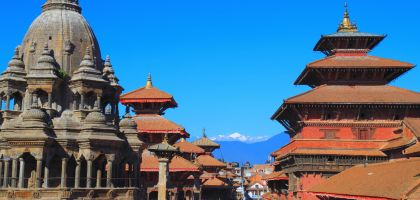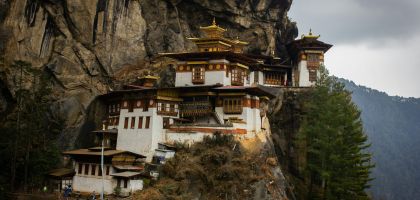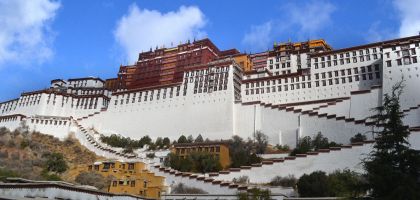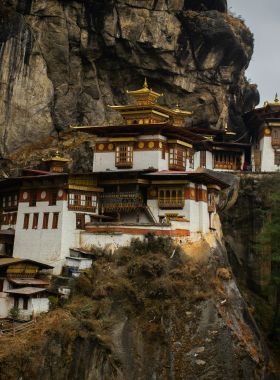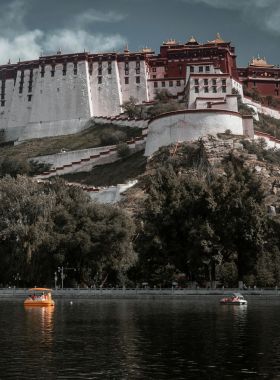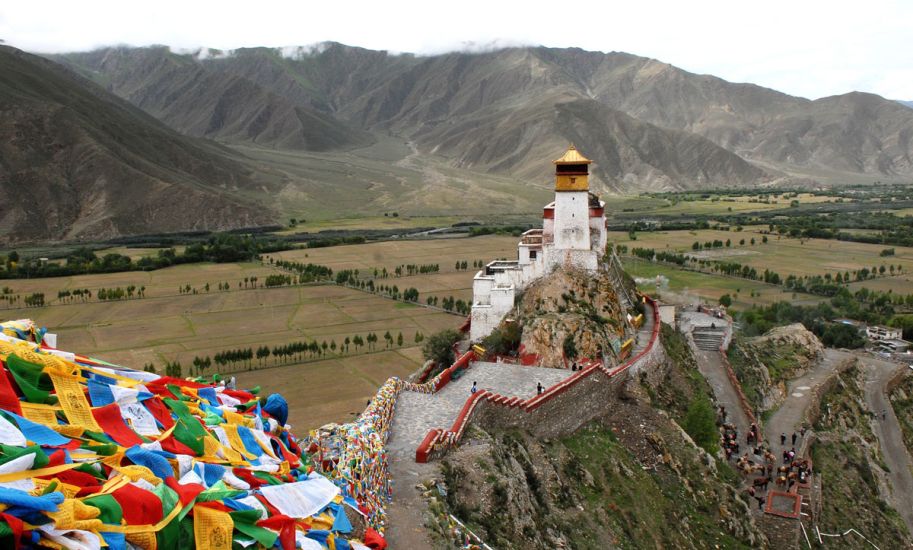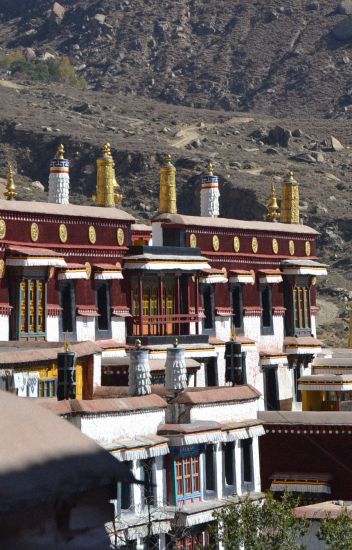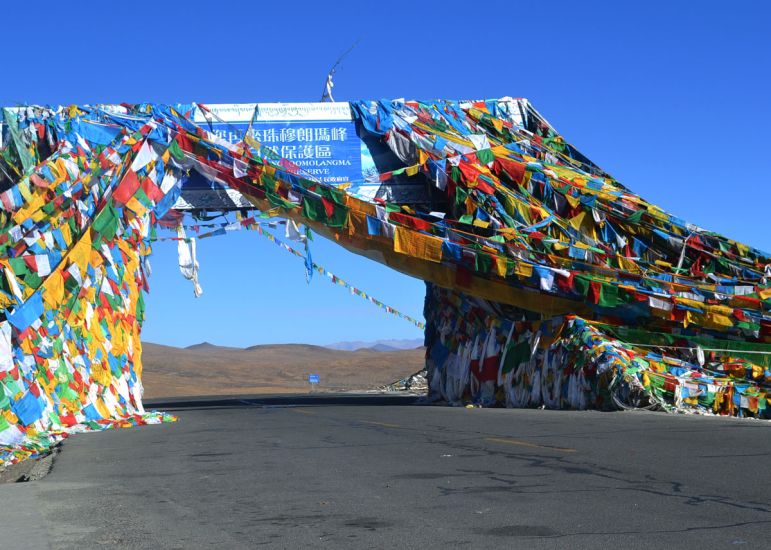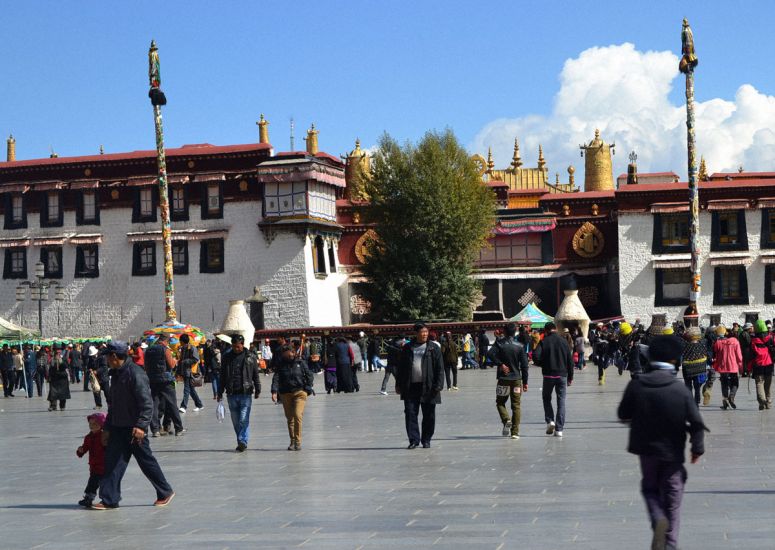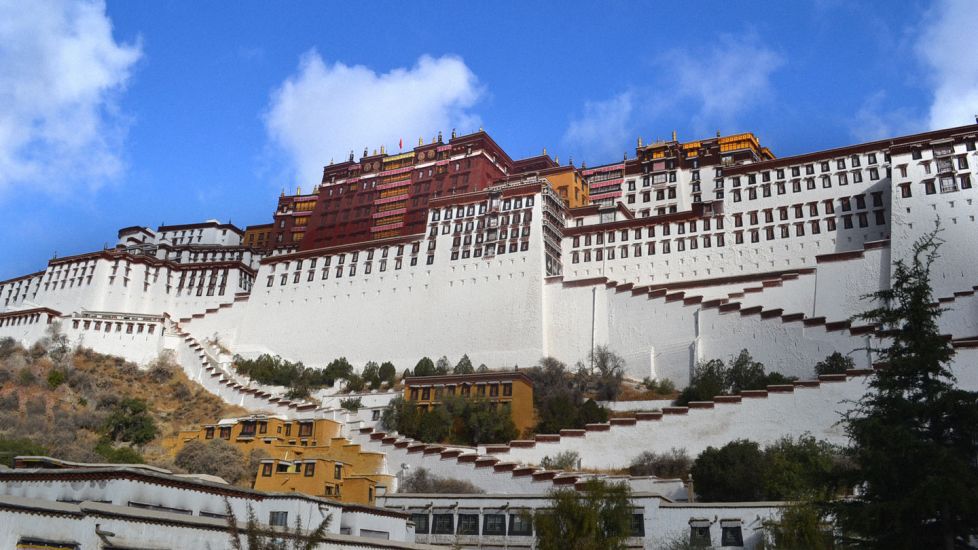Ganden to Samye Trek
11 Days / Tibet
Activity
Difficulty Level
Destinations
Trip Start / End
Max Altitude
Accommodation
Travel Style
Best time to travel
Personalized Travel Advice

Dev Raj Nepal
+977 9851096523
Personalized Travel Advice

Dev Raj Nepal
+977 9851096523
Detailed Itinerary
01
DAY
01
Upon your arrival at Gonggar Airport, you will be greeted by our representative, who will assist with immigration and airport formalities. From the airport, enjoy a scenic drive through the Yarlung Tsangpo River valley to reach the spiritual heart of Tibet, Lhasa. After arriving, check into your hotel and take the rest of the day to relax and acclimatize to the high-altitude environment.
Arrival at Gonggar Airport – Drive to Lhasa
Upon your arrival at Gonggar Airport, you will be greeted by our representative, who will assist with immigration and airport formalities. From the airport, enjoy a scenic drive through the Yarlung Tsangpo River valley to reach the spiritual heart of Tibet, Lhasa. After arriving, check into your hotel and take the rest of the day to relax and acclimatize to the high-altitude environment.
02
DAY
02
Begin your exploration of Lhasa with a visit to the sacred Jokhang Temple, a UNESCO World Heritage Site revered as the spiritual heart of Tibetan Buddhism. The temple houses the iconic Jowo Shakyamuni statue and features murals and chapels steeped in history. Next, head to the serene Sera Monastery, famous for its lively debating monks and intricate artwork. Conclude your day at Barkhor Market, where you can soak in the vibrant atmosphere as pilgrims circumambulate the Jokhang and shop for Tibetan handicrafts and souvenirs.
Lhasa Sightseeing
Begin your exploration of Lhasa with a visit to the sacred Jokhang Temple, a UNESCO World Heritage Site revered as the spiritual heart of Tibetan Buddhism. The temple houses the iconic Jowo Shakyamuni statue and features murals and chapels steeped in history. Next, head to the serene Sera Monastery, famous for its lively debating monks and intricate artwork. Conclude your day at Barkhor Market, where you can soak in the vibrant atmosphere as pilgrims circumambulate the Jokhang and shop for Tibetan handicrafts and souvenirs.
03
DAY
03
Continue your journey through Lhasa with a visit to the majestic Potala Palace, an architectural masterpiece and a symbol of Tibetan Buddhism. Explore its 13-story structure, filled with intricate murals, statues, and historical artifacts. Later, visit Drepung Monastery, once the largest monastery in Tibet and the former residence of the Dalai Lama. Nestled on the slopes of Mount Gambo Utse, it offers a serene retreat and insight into the teachings of Je Tsongkhapa, founder of the Gelug school of Tibetan Buddhism.
Lhasa Sightseeing
Continue your journey through Lhasa with a visit to the majestic Potala Palace, an architectural masterpiece and a symbol of Tibetan Buddhism. Explore its 13-story structure, filled with intricate murals, statues, and historical artifacts. Later, visit Drepung Monastery, once the largest monastery in Tibet and the former residence of the Dalai Lama. Nestled on the slopes of Mount Gambo Utse, it offers a serene retreat and insight into the teachings of Je Tsongkhapa, founder of the Gelug school of Tibetan Buddhism.
04
DAY
04
In the morning, drive to the historic Ganden Monastery, perched on a hill overlooking the Lhasa River. This monastery, the first Gelugpa monastery, holds great significance as the seat of Je Tsongkhapa’s teachings. After exploring the monastery’s chapels and shrines, drive to Tsunshi Village, where the trekking adventure begins. From the village, embark on a three-hour trek to reach Yama-do, a serene campsite surrounded by stunning landscapes.
Lhasa to Ganden Monastery and Trek to Yama-do
In the morning, drive to the historic Ganden Monastery, perched on a hill overlooking the Lhasa River. This monastery, the first Gelugpa monastery, holds great significance as the seat of Je Tsongkhapa’s teachings. After exploring the monastery’s chapels and shrines, drive to Tsunshi Village, where the trekking adventure begins. From the village, embark on a three-hour trek to reach Yama-do, a serene campsite surrounded by stunning landscapes.
05
DAY
05
Today, the trek takes you over the Shug-La Pass, reaching an altitude of 5,250 meters. The ascent is rewarded with breathtaking views of the Tibetan plateau. Descend gradually into the Tsotup Chu Valley, where the trail crosses streams and meadows before arriving at the Tsotup Chu River. Set up camp along its shores for the night.
Trek to Tsotup Chu Valley
Today, the trek takes you over the Shug-La Pass, reaching an altitude of 5,250 meters. The ascent is rewarded with breathtaking views of the Tibetan plateau. Descend gradually into the Tsotup Chu Valley, where the trail crosses streams and meadows before arriving at the Tsotup Chu River. Set up camp along its shores for the night.
06
DAY
06
Follow the Tsotup Chu River upstream and ascend towards the Chitu-La Pass, which stands at 5,090 meters. The climb offers a mix of steep trails and gentle plateaus. After crossing the pass, the trail descends into a lush area where you will camp for the night amidst beautiful alpine scenery.
Trek to Chitu La Pass
Follow the Tsotup Chu River upstream and ascend towards the Chitu-La Pass, which stands at 5,090 meters. The climb offers a mix of steep trails and gentle plateaus. After crossing the pass, the trail descends into a lush area where you will camp for the night amidst beautiful alpine scenery.
07
DAY
07
On the final day of the trek, the path winds through shrub forests and opens into picturesque meadows. The gradual ascent leads to the Yamalung Valley, a sacred site where Guru Rinpoche is said to have meditated. From Yamalung, a short drive takes you to Samye town. Check into your hotel and enjoy a well-deserved rest. Overnight at Samye.
Trek to Yamalung Valley and Drive to Samye
On the final day of the trek, the path winds through shrub forests and opens into picturesque meadows. The gradual ascent leads to the Yamalung Valley, a sacred site where Guru Rinpoche is said to have meditated. From Yamalung, a short drive takes you to Samye town. Check into your hotel and enjoy a well-deserved rest. Overnight at Samye.
08
DAY
08
Spend the day exploring the magnificent Samye Monastery, the first Buddhist monastery in Tibet. Constructed in the 8th century by King Trisong Detsen, the monastery’s layout represents a mandala, symbolizing the Buddhist cosmos. Marvel at its intricate architecture, statues, and murals, which reflect Tibetan spirituality and artistry.
Explore Samye Monastery
Spend the day exploring the magnificent Samye Monastery, the first Buddhist monastery in Tibet. Constructed in the 8th century by King Trisong Detsen, the monastery’s layout represents a mandala, symbolizing the Buddhist cosmos. Marvel at its intricate architecture, statues, and murals, which reflect Tibetan spirituality and artistry.
09
DAY
09
After breakfast, take a scenic drive from Samye to Tsedang, the cradle of Tibetan civilization and the ancient capital of the Yarlung Valley. Upon arrival, settle into your hotel and spend the evening exploring the town at your leisure.
Drive to Tsedang
After breakfast, take a scenic drive from Samye to Tsedang, the cradle of Tibetan civilization and the ancient capital of the Yarlung Valley. Upon arrival, settle into your hotel and spend the evening exploring the town at your leisure.
10
DAY
10
Begin your day with a visit to Yumbulagang Palace, a legendary structure believed to be Tibet’s first building, offering panoramic views of the Yarlung Valley. Continue to Trandruk Monastery, one of Tibet’s oldest monasteries, home to the famous pearl Thangka. If time permits, explore the Chimphu meditation caves, where Tibetan yogis have practiced for centuries. Return to your hotel for the night.
Tsedang Exploration
Begin your day with a visit to Yumbulagang Palace, a legendary structure believed to be Tibet’s first building, offering panoramic views of the Yarlung Valley. Continue to Trandruk Monastery, one of Tibet’s oldest monasteries, home to the famous pearl Thangka. If time permits, explore the Chimphu meditation caves, where Tibetan yogis have practiced for centuries. Return to your hotel for the night.
11
DAY
11
After breakfast, you will be transferred to the airport for your onward journey, carrying with you unforgettable memories of Tibet’s cultural, spiritual, and natural treasures.
Departure
After breakfast, you will be transferred to the airport for your onward journey, carrying with you unforgettable memories of Tibet’s cultural, spiritual, and natural treasures.
Tour Cost
At High Asia Tours, we know that understanding tour costs is essential for planning your trip. Due to variables such as accommodation choices, meal plans, transportation options, group size, and seasonal demand, providing an exact price upfront is challenging.
To assist you, we offer a starting price to give a general idea of the cost:
The starting cost for this tour is
Includes / Excludes
Inclusions
-
Accommodation on twin sharing in Lhasa and Tsedang.
-
Daily breakfast in hotels portion and full board during trekking.
-
All transfers and sightseeing by private 4WD Toyota Landcruiser and supporting vehicle for gears and supplies.
-
Tented accommodation during camping. All camping gears, kitchen gears, camp set up and breakdown services included.
-
English speaking Guide /Leader.
-
Cook and helps.
-
Pack animals and animal driver.
-
Tibet Travel Permit.
-
Sightseeing Admission fees.
Exclusions
-
International and internal air fare into and out of Lhasa.
-
Airport Taxes.
-
Chinese visa fee.
-
Lunch and dinner during hotel stays.
-
Travel & Health Insurance..
-
Travel & Health Insurance..
-
Medical Immunizations.
-
All extra expenses caused due to nature or unforeseen events.
-
Excess baggage charges.
-
Optional tipping to local staffs, hotels etc.
-
Items of a personal nature (sodas, alcoholic beverages, laundry, telephone etc).
Trip Info
Spring (April – June)
From May to June, temperatures range from 5°C to 18°C (41°F to 64°F) during the day, while nights can drop to -2°C to 5°C (28°F to 41°F) at higher altitudes. The skies are generally clear, offering excellent visibility of the surrounding landscapes. The terrain begins to turn lush and green after the winter, making for a refreshing trekking experience. This period also sees fewer crowds, allowing for a more peaceful journey through Tibet’s remote highlands.
Summer (July – August)
During the summer months, daytime temperatures remain pleasant, ranging from 10°C to 22°C (50°F to 72°F), while nights are relatively mild, averaging 0°C to 8°C (32°F to 46°F). The trails are at their most vibrant, with blooming wildflowers and lush valleys. While Tibet is in the rain shadow of the Himalayas, occasional light rainfall may occur, though it rarely disrupts trekking plans.
Early Autumn (September – October)
September and October offer the most stable weather for trekking. Daytime temperatures range from 5°C to 17°C (41°F to 63°F), while nights can be quite cold, dropping to -5°C to 3°C (23°F to 37°F), especially in higher camps. The air is crisp, and the mountain views are exceptionally clear. The surrounding landscapes take on golden hues, creating a stunning contrast against the deep blue skies. While days are comfortable for trekking, proper gear is essential for the colder nights.
You will be transferred to Lhasa in a private vehicle, typically a 4×4 SUV or minibus, depending on the group size. These vehicles are specifically chosen for their ability to handle the rugged mountain roads, ensuring a smooth and comfortable journey to your hotel in Lhasa. All transfers during the trip are conducted in reliable, high-altitude vehicles designed to navigate Tibet’s challenging terrain with both safety and comfort in mind.
The vehicles are carefully selected to withstand the unpredictable nature of Tibet’s roads, particularly in high-altitude and remote areas. They are equipped with proper suspension to provide a stable ride over uneven terrain. Additionally, all vehicles offer air conditioning or heating, ensuring comfort in any season.
Throughout this Tibet tour, we have carefully selected a range of comfortable accommodations to ensure you experience a blend of Tibetan culture and modern amenities.
Hotels: In cities like Lhasa and Tsedang, you will stay in well-appointed hotels that offer a cozy retreat after your day of exploration. These hotels are equipped with essential facilities like warm showers, comfortable beds, and Wi-Fi access in select areas, allowing you to rest and recharge. The warm Tibetan hospitality will make you feel right at home.
Guest Houses: In Samye and Tsedang, you will be staying in traditional guest houses that provide an authentic Tibetan experience. These accommodations offer clean, simple rooms and a warm, welcoming atmosphere. You will experience the charm of local Tibetan life, with home-cooked meals and a chance to interact with friendly locals.
Camping: During your trekking days, you’ll enjoy camping in scenic spots surrounded by nature. Each campsite is carefully selected for its tranquility and stunning views. Comfortable tents and basic camping amenities will be provided, ensuring you have a restful night amidst the serene Tibetan plateau. These campsites offer the perfect opportunity to connect with nature, away from the hustle and bustle of city life.
Tibetan cuisine is hearty and designed to keep you energized at high altitudes. You’ll savor traditional dishes like tsampa (roasted barley flour), momos (steamed dumplings), and thukpa (noodle soup), along with yak meat stews that are staples of local meals. On trekking days, expect simple yet filling meals, including rice, vegetables, and meat, as well as hot soups and momos to keep you fueled throughout the journey.
International meal options are available at hotels and guest houses, including pasta, rice dishes, and salads, catering to various preferences. Traditional Tibetan butter tea, herbal teas, and coffee are commonly served, offering warmth and comfort. As you explore local markets, you’ll have the chance to try snacks like fresh fruit, nuts, and Tibetan sweets, adding a delightful touch to your culinary experience.
Clothing:
- Warm layers (thermal base layers, fleece jacket, down jacket)
- Waterproof and windproof jacket
- Trekking pants and shorts
- Comfortable walking shoes/boots
- Sandals or flip-flops for accommodations
- Hat, gloves, and scarf
- Sun hat or cap
- Lightweight, breathable clothing for warmer days
- Socks (preferably moisture-wicking)
- Sunglasses (with UV protection)
Trekking Gear:
- Daypack (for daily hikes and treks)
- Lightweight towel
- Water bottle or hydration system
- Personal first aid kit (including blister care, pain relievers, etc.)
- Sunblock (SPF 30 or higher)
- Lip balm with sun protection
Travel Essentials:
- Passport and visa (with photocopies)
- Travel insurance details
- Camera and extra memory cards/batteries
- Power bank and charger (portable)
- Flashlight or headlamp
- Personal hygiene items (toothbrush, toothpaste, etc.)
- Wet wipes or hand sanitizer
- Toilet paper and tissues
- Ziploc bags (for keeping electronics and documents dry)
High Altitude and Acclimatization
Tibet’s high-altitude environment can be challenging, especially during the first few days. You may experience some symptoms of altitude sickness such as shortness of breath or fatigue. Acclimatization is key, and the itinerary allows time to adjust to the elevation. Drink plenty of water, take it easy, and follow your guide’s advice to ensure a safe and comfortable trip.
Breathtaking Landscapes
Prepare to be amazed by Tibet’s diverse and awe-inspiring landscapes. From the vast Tibetan Plateau to the rugged mountain ranges and peaceful valleys, every view feels like a postcard. Expect to trek through stunning natural scenery, with crystal-clear rivers, grassy meadows, and towering peaks as your backdrop.
Rich Cultural and Spiritual Heritage
Tibet is steeped in ancient traditions and spiritual practices. Visiting revered sites like the Jokhang Temple and Potala Palace, you’ll witness Buddhist ceremonies and rituals performed by monks and pilgrims. The region’s deep spirituality offers a profound connection to Tibetan culture that you’ll feel in every monastery, prayer flag, and sacred site you visit.
Tibetan Cuisine
Tibetan food is hearty and designed to fuel your journey. Expect dishes like momos (dumplings), tsampa (roasted barley flour), and yak meat stews, which provide warmth and energy in the high-altitude climate. Meals will be simple but satisfying, with options available for international tastes at hotels and guesthouses.
Warm Hospitality
Despite the region’s remote nature, the Tibetan people are known for their warm hospitality. Expect to be welcomed with kindness, whether you’re interacting with monks at a monastery or local vendors at markets. The friendly atmosphere will enhance your experience, making your trip even more memorable.
FAQs
Personalized Travel Advice

Dev Raj Nepal
+977 9851096523
